#automatic shelling machine
Text
From Orchard to Market: Navigating the Cashew Processing Business
Introduction:
Cashew nuts, known for their creamy texture and distinct flavor, have become a global favorite, finding their way into various culinary delights and snack options. Behind the scenes, a sophisticated and intricate process unfolds to bring these delicious nuts from the orchard to your table. In this blog post, we'll explore the fascinating world of cashew processing Machine businesses, delving into the journey that transforms raw cashews into the premium product we enjoy.
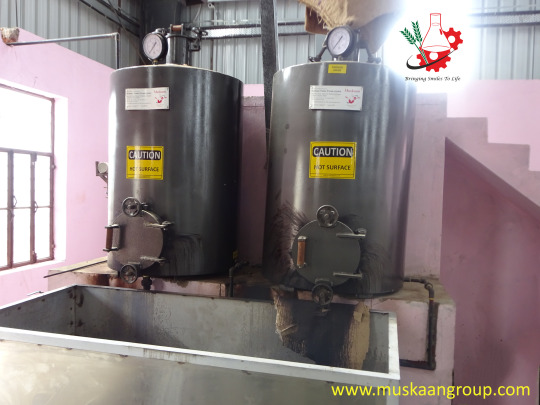
The Cashew Tree and Harvesting:
The journey begins in the tropical regions where cashew trees thrive. Native to Brazil, cashew trees now grow in various parts of the world, including India, Vietnam, Nigeria, and Ivory Coast. The cashew nut, which is actually a seed, is encased in a hard shell attached to the cashew apple. Harvesting involves carefully plucking the cashew apples and extracting the nuts.
Processing the Raw Cashews:
Once harvested, the cashews undergo a series of processing steps to make them market-ready. The first step involves removing the outer shell with the help of Automatic Shelling machine, which is toxic and can cause skin irritation. This delicate process is typically done manually to ensure the nuts remain intact.
Drying and Curing:
After the outer shell is removed, the cashews are spread out for drying in Cashew Dryer. Proper drying is crucial to prevent mold and ensure a longer shelf life. The dried cashews then undergo a curing process to enhance flavor and reduce the risk of spoilage. This step is critical in maintaining the quality of the final product.
Grading and Sorting:
Once cured, the cashews are graded based on size, color, and quality. Sorting ensures that only premium nuts make it to the next stages of processing, guaranteeing a uniform and high-quality end product. Advanced machinery is often employed to streamline this process, increasing efficiency and accuracy.
Roasting and Packaging:
Roasting is a key step in developing the rich, nutty flavor that cashews are known for. The nuts are carefully roasted at controlled temperatures to achieve the desired taste profile. Following roasting, the cashews are packaged in various sizes vacuum packing machine and formats for distribution to consumers, retailers, and food manufacturers.
Market Trends and Challenges:
The cashew processing industry is not without its challenges. Fluctuating weather conditions, price volatility, and supply chain disruptions can impact the industry. Moreover, market trends, such as the increasing demand for organic and sustainably sourced products, play a significant role in shaping the business strategies of cashew processors.
Global Impact and Economic Contributions:
Cashew processing is not just a culinary journey but also an economic one. Many countries rely heavily on cashew production and processing as a major source of income. The industry provides employment opportunities and contributes to the economic development of regions where cashews are cultivated.

The Future of Cashew Processing:
As consumer preferences evolve, the cashew processing Machine industry continues to innovate. From introducing new flavors to exploring sustainable and eco-friendly practices, businesses in this sector are adapting to meet the demands of a dynamic market.
Conclusion:
The journey from cashew orchard to kitchen table is a testament to the intricate process that transforms raw nuts into the delectable snack we all enjoy. Cashew processing businesses play a crucial role in delivering quality products to consumers while contributing to the economic development of regions where cashews are cultivated. As the industry navigates challenges and embraces innovation, the future holds exciting possibilities for both producers and consumers in the world of cashew processing.
#cashew#cashew machine#cashew nut machine#automatic shelling machine#cashew processing machine#automatic cashew shelling machine#raw cashew nut shelling machine#automatic cashew peeling machines#cashew boilers#automatic raw cashew grader
0 notes
Text

Cashew Nut Shelling System | Advanced Cashew MachinesNut Decorticating Machine, Automatic Cashew Nut Cutting Machine, Cashew Manual Shelling Machine, and De-Shelling Machine
Find efficient cashew shelling machines: Hand/Leg operated, Semi-Auto (25kg/hr & 50kg/hr), with shell/kernel separating system. Boost productivity now!
#Cashew Manual Shelling Machine#De-Shelling Machine#Automatic Cashew Shelling Machine De-Shelling Machine#Semi Automatic Shelling Machine#Hand and Leg Operated Shelling Machine#Manual Cashew Shelling Machines
0 notes
Text
Raw Cashew Shelling Machine, Automatic Cashew Nut Cutting Machines Manufacturers, Kaju Shelling System

Raw Cashew Shelling Machine, Automatic Cashew Nut Cutting Machines Manufacturers, Kaju Shelling System
GI Agro Tech manufacturing fully automatic cashew shelling machines, manual cashew nuts shell removing machine is used to break cashew and separate shell and kernel. Models are available in horizontal and vertical systems
#rcn shelling system#cashew nut shelling system price#automatic cashew nut shelling machine#cashew nut shelling machine manufacturer#cashew nut cutting system supplier
0 notes
Link

#Thermoforming Equipment#Vacuum Forming Machine#Blister Forming#Clam Shells#Trade Moulding#Plastic Packaging#Thermoforming Industry#Automatic Vacuum Forming
0 notes
Text
i love Etho’s modded videos because i never have any idea what’s going on at any given moment
#we were making an automatic mining machine#i looked away#i looked back#we are collecting sea shells? and turtle blessings?#levitating sheep? huh?#and i just giggle and twirl my hair and go 'omg hes soooo good at getting turtle blessings'
0 notes
Text
Automatic Cashew Nut Shelling Machine, Cashew Nut Cutting Machine - GI Agro Technologies
Raw Cashew Shelling Machine manufacturer in Chennai.GI Agro Tech manufacturing fully automatic cashew shelling machines, manual cashew nuts shell removing machine is used to break cashew and separate shell and kernel. Models are available in horizontal and vertical systems
#rcn shelling system#cashew nut shelling system price#automatic cashew nut shelling machine#cashew nut shelling machine manufacturer#cashew nut cutting system supplier
0 notes
Text
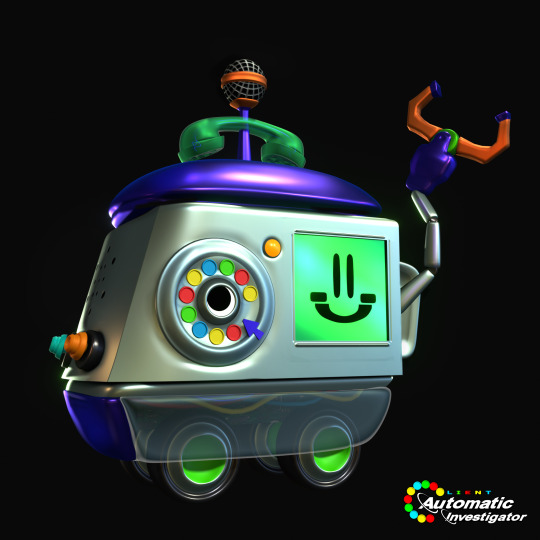

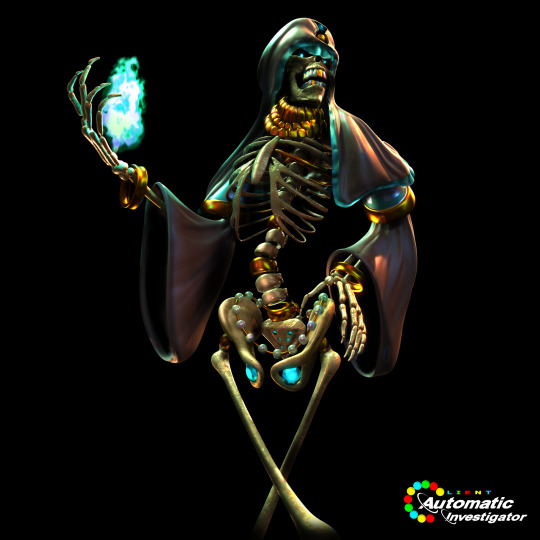

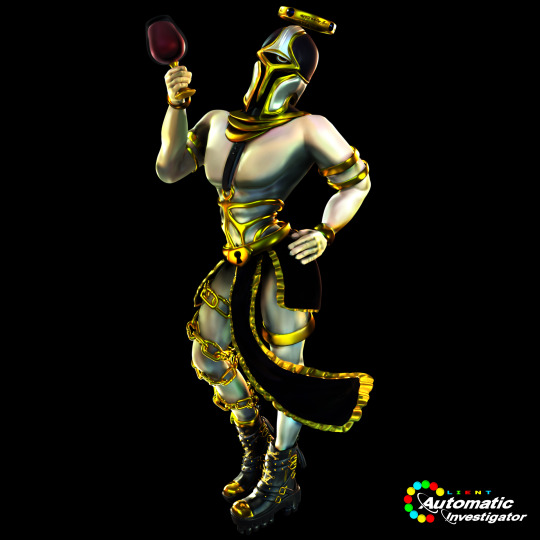
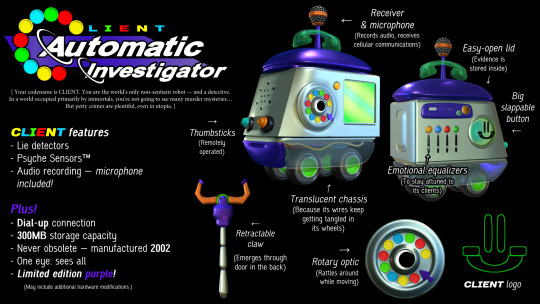

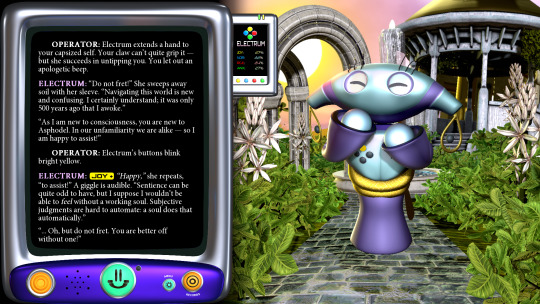


I kept forgetting to post this... But! Here's some of the stuff I've made for my game so far! It's called CLIENT: Automatic Investigator, and it's a goofy mystery visual novel. (Essentially: Ace Attorney but with robots and gods.)
You play as CLIENT, a computerized detective from ≈ 2002 CE. Its plasticine shell survived billions of years worth of apocalyptic events — until, in the year 2.00291732614102e+23, it finally wakes up from sleep mode. CLIENT is one of the few remaining non-sentient robots in the world.
For investigative purposes, CLIENT is equipped with lie detectors, psyche sensors, and the ability to record anything said to it. Since it lacks vocal synthesizers, CLIENT must use hard evidence alone in its investigations. It communicates through what it collects — and through carefully selected audio recordings. (When given a microphone and silence, it turns out most people have a LOT to say.)
In 2.00291732614102e+23, Earth's population is all sentient machines and undying deities. Since murder isn't possible (and the world is mostly utopian), CLIENT is left to solve inconsequential cases of counterfeiting, copyright infringement, and the occasional act of arson.
Everyone here is part of the game's first case (OPERATION: AMBROSIA). There will be four cases total, each released individually. Everything is still really early in development, but I'm excited! It's a super silly game & lots of fun to work on.
#my art#3d art#gamedev#C:AI#← cool new tag for this. IDK how often i'll post about it but it's good to have!#but yeah this is what i've been up to as of late =D#there's still further info on my art fight pages but i'm planning on moving some of that over to my website soon...#i just don't want to dump all of that onto a few scattered posts on here LOL
582 notes
·
View notes
Text
Jaegers of Pacific Rim: What do we know about them?
There's actually a fair amount of lore about Pacific Rim's jaegers, though most of it isn't actually in the movie itself. A lot of it has been scattered in places like Pacific Rim: Man, Machines, & Monsters, Tales From Year Zero, Travis Beacham's blog, and the Pacific Rim novelization.
Note that I will not be including information from either Pacific Rim: Uprising or Pacific Rim: The Black. Uprising didn't really add anything, and The Black's take on jaegers can easily be summed up as "simplified the concept to make a cartoon for children."
So what is there to know about jaegers, besides the fact that they're piloted by two people with their brains connected via computer?
Here's a fun fact: underneath the hull (which may or may not be pure iron), jaegers have "muscle strands" and liquid data transfer technology. Tendo Choi refers to them in the film when describing Lady Danger's repairs and upgrades:
Solid iron hull, no alloys. Forty engine blocks per muscle strand. Hyper-torque driver for every limb and a new fluid synapse system.
The novelization by Alex Irvine makes frequent references to this liquid data transfer tech. For example:
The Jaeger’s joints squealed and began to freeze up from loss of lubricant through the holes Knifehead had torn in it. Its liquid-circuit neural architecture was misfiring like crazy. (Page 29.)
He had enough fiber-optic and fluid-core cabling to get the bandwidth he needed. (Page 94.)
Newt soldered together a series of leads using the copper contact pins and short fluid-core cables. (Page 96.)
Unfortunately I haven't found anything more about the "muscle strands" and what they might be made of, but I do find it interesting that jaegers apparently have some sort of artificial muscle system going on, especially considering Newt's personnel dossier in the novel mentioned him pioneering research in artificial tissue replication at MIT.
The novelization also mentions that the pilots' drivesuits have a kind of recording device for their experiences while drifting:
This armored outer layer included a Drift recorder that automatically preserved sensory impressions. (Page 16.)
It was connected through a silver half-torus that looked like a travel pillow but was in fact a four-dimensional quantum recorder that would provide a full record of the Drift. (Page 96.)
This is certainly... quite the concept. Perhaps the PPDC has legitimate reasons for looking through the memories and feelings of their pilots, but let's not pretend this doesn't enable horrific levels of privacy invasion.
I must note, though, I haven't seen mention of a recording system anywhere outside of the novel. Travis Beacham doesn't mention it on his blog, and it never comes up in either Tales From Year Zero or Tales From The Drift, both written by him. Whether there just wasn't any occasion to mention it or whether this piece of worldbuilding fell by the wayside in Beacham's mind is currently impossible to determine.
Speaking of the drivesuits, let's talk about those more. The novelization includes a few paragraphs outlining how the pilots' drivesuits work. It's a two-layer deal:
The first layer, the circuity suit, was like a wetsuit threaded with a mesh of synaptic processors. The pattern of processor relays looked like circuitry on the outside of the suit, gleaming gold against its smooth black polymer material. These artificial synapses transmitted commands to the Jaeger’s motor systems as fast as the pilot’s brain could generate them, with lag times close to zero. The synaptic processor array also transmitted pain signals to the pilots when their Jaeger was damaged.
...
The second layer was a sealed polycarbonate shell with full life support and magnetic interfaces at spine, feet, and all major limb joints. It relayed neural signals both incoming and outgoing. This armored outer layer included a Drift recorder that automatically preserved sensory impressions.
...
The outer armored layer of the drivesuit also kept pilots locked into the Conn-Pod’s Pilot Motion Rig, a command platform with geared locks for the Rangers’ boots, cabled extensors that attached to each suit gauntlet, and a full-spectrum neural transference plate, called the feedback cradle, that locked from the Motion Rig to the spine of each Ranger’s suit. At the front of the motion rig stood a command console, but most of a Ranger’s commands were issued either by voice or through interaction with the holographic heads-up display projected into the space in front of the pilots’ faces. (Page 16.)
Now let's talk about the pons system. According to the novelization:
The basics of the Pons were simple. You needed an interface on each end, so neuro signals from the two brains could reach the central bridge. You needed a processor capable of organizing and merging the two sets of signals. You needed an output so the data generated by the Drift could be recorded, monitored, and analyzed. That was it. (Page 96.)
This is pretty consistent with other depictions of the drift, recording device aside. (Again, the 4D quantum recorder never comes up anywhere outside of the novel.)
The development of the pons system as we know it is depicted in Tales From Year Zero, which goes into further detail on what happened after Trespasser's attack on San Francisco. In this comic, a jaeger can be difficult to move if improbably calibrated. Stacker Pentecost testing out a single arm describes the experience as feeling like his hand is stuck in wet concrete; Doctor Caitlin Lightcap explains that it's resistance from the datastream because the interface isn't calibrated to Pentecost's neural profile. (I'm guessing that this is the kind of calibration the film refers to when Tendo Choi calls out Lady Danger's left and right hemispheres being calibrated.)
According to Travis Beacham's blog, solo piloting a jaeger for a short time is possible, though highly risky. While it won't cause lasting damage if the pilot survives the encounter, the neural overload that accumulates the longer a pilot goes on can be deadly. In this post he says:
It won't kill you right away. May take five minutes. May take twenty. No telling. But it gets more difficult the longer you try. And at some point it catches up with you. You won't last a whole fight start-to-finish. Stacker and Raleigh managed to get it done and unplug before hitting that wall.
In this post he says:
It starts off fine, but it's a steep curve from fine to dead. Most people can last five minutes. Far fewer can last thirty. Nobody can last a whole fight.
Next, let's talk about the size and weight of jaegers. Pacific Rim: Man, Machines, & Monsters lists off the sizes and weights of various jaegers. The heights of the jaegers it lists (which, to be clear, are not all of them) range from 224 feet to 280 feet. Their weights range from 1850 tons to 7890 tons. Worth noting, the heaviest jaegers (Romeo Blue and Horizon Brave) were among the Mark-1s, and it seems that these heavy builds didn't last long given that another Mark-1, Coyote Tango, weighed 2312 tons.
And on the topic of jaeger specs, each jaeger in Pacific Rim: Man, Machines, & Monsters is listed with a (fictional) power core and operating system. For example, Crimson Typhoon is powered by the Midnight Orb 9 power core, and runs on the Tri-Sun Plasma Gate OS.
Where the novelization's combat asset dossiers covers the same jaegers, this information lines up - with the exception of Lady Danger. PR:MMM says that Lady Danger's OS is Blue Spark 4.1; the novelization's dossier says it's BLPK 4.1.
PR:MMM also seems to have an incomplete list of the jaegers' armaments; for example, it lists the I-22 Plasmacaster under Weaponry, and "jet kick" under Power Moves. Meanwhile, the novelization presents its armaments thus:
I-22 Plasmacaster
Twin Fist gripping claws, left arm only
Enhanced balance systems and leg-integral Thrust Kickers
Enhanced combat-strike armature on all limbs
The novel's dossiers list between 2-4 features in the jaegers' armaments sections.
Now let's move on to jaeger power cores. As many of you probably already know, Mark-1-3 jaegers were outfitted with nuclear power cores. However, this posed a risk of cancer for pilots, especially during the early days. To combat this, pilots were given the (fictional) anti-radiation drug, Metharocin. (We see Stacker Pentecost take Metharocin in the film.)
The Mark-4s and beyond were fitted with alternative fuel sources, although their exact nature isn't always clear. Striker Eureka's XIG supercell chamber implies some sort of giant cell batteries, but it's a little harder to guess what Crimson Typhoon's Midnight Orb 9 might be, aside from round.
Back on the topic of nuclear cores, though, the novelization contains a little paragraph about the inventor of Lady Danger's power core, which I found entertaining:
The old nuclear vortex turbine lifted away from the reactor housing. The reactor itself was a proprietary design, brainchild of an engineer who left Westinghouse when they wouldn’t let him use his lab to explore portable nuclear miniaturization tech. He’d landed with one of the contractors the PPDC brought in at its founding, and his small reactors powered many of the first three generations of Jaegers. (Page 182.)
Like... I have literally just met this character, and I love him. I want him to meet Newt Geiszler, you know? >:3
Apparently, escape pods were a new feature to Mark-3 jaegers. Text in the novelization says, "New to the Mark III is an automated escape-pod system capable of ejecting each Ranger individually." (Page 240.)
Finally, jaegers were always meant to be more than just machines. Their designs and movements were meant to convey personality and character. Pacific Rim: Man, Machines, & Monsters says:
Del Toro insisted the Jaegers be characters in and of themselves, not simply giant versions of their pilots. Del Toro told his designers, "It should be as painful for you to see a Jaeger get injured as it is for you to see the pilot [get hurt.]" (Page 56.)
Their weathered skins are inspired by combat-worn vehicles from the Iraq War and World War II battleships and bombers. They look believable and their design echoes human anatomy, but only to a point. "At the end of the day, what you want is for them to look cool," says Francisco Ruiz Velasco. "It's a summer movie, so you want to see some eye candy." Del Toro replies, "I, however, believe in 'eye protein,' which is high-end design with a high narrative content." (Page 57.)
THE JAEGER FROM DOWN UNDER is the only Mark 5, the most modern and best all-around athlete of the Jaegers. He's also the most brutal of the Jaeger force. Del Toro calls him "sort of brawler, like a bar fighter." (Page 64.)
And that is about all the info I could scrounge up and summarize in a post. I think there's a lot of interesting stuff here - like, I feel that the liquid circuit and muscle tissue stuff gives jaegers an eerily organic quality that could be played for some pretty interesting angles. And I also find it interesting that jaegers were meant to embody their own sort of character and personality, rather than just being simple combat machines or extensions of their pilots - it's a great example of a piece of media choosing thematic correctness over technical correctness, which when you get right down to it, is sort of what Pacific Rim is really all about.
84 notes
·
View notes
Text
So I just reblogged a post that reminded me of something I’ve wanted to say for awhile:
90% of the workforce at my job is not white. Possibly more than 90%.
Over 80% are Latine. The next-largest block is immigrants from Rwanda and Congo (most don’t consider themselves refugees, although some are). I’m estimating about 10% of our workforce.
Next is white. Then pan-tribal Native American, then our single Vietnamese dude.
Out of a crew of approximately 35-40 people in my section, only three are white, and I’m one of them.
The reason I bring this up is because I also see the number of people who come in and then find they can’t or don’t want to do manufacturing work and wash out, and…they’re mostly not white either, but I’d say any generic white hire is about twice as likely to leave as any generic nonwhite hire.
So the next time you hear some asshole complaining about how the immigrants are taking all the jobs, a few rebuttals you can make courtesy of someone who really is in a field that’s mostly immigrants:
1) have you actually applied or are you just sat on your ass wanting to bitch?
2) did you actually show up when hired or did you decide the work was beneath you?
Because a hell of a lot of folks seem very surprised to see a young white person running a machine at my job. They have the automatic take that most white people don’t want the hours (it’s 12 hours a day, on your feet) or the risk (you can absolutely die or lose body parts in my job, and also you’re playing with chemicals all day) or the discomfort (you know that one scene in Willy Wonka where all the ladies at the shelling factory have on those gowns and nets? Yeah, it really is like that, and it’s hot as fuck). The assumption is that whites are rarely willing to do get-your-hands-dirty “menial” work, even for $20 an hour.
And one last thing.
I’m considered EXTREMELY VALUABLE because I can train in both English and Spanish. Far from an immigrant “taking” a job, I was DESPERATELY WANTED in this job. The hiring manager actually said she was concerned I was overqualified and I had to convince her I meant to stay. You want to go far in manufacturing? Be willing to get dirty and work hard and the sky, not your skin color, is the limit.
(Actually, one last-last thing. One of my Rwandan coworkers was having a conversation with me and mentioned that he really hates how western media talks about Africa in general, but Rwanda in particular. As he put it: “yes, there is war. So? We still have beautiful things.” He’s actually really proud of where he’s from. So from me, on his behalf: I encourage you to seek out non-mainstream writing on Rwandan history and culture. There is so much that never gets explored by our media because it suits them to push a narrative.)
105 notes
·
View notes
Text
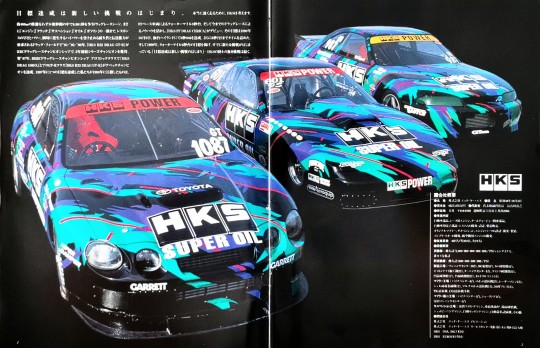
Achieving a goal is the beginning of a new challenge. To run really fast, HKS thinks.
A drag race scene where people compete for 0.001 seconds over a distance of about 400 meters in just a few seconds. '91 is a drag field that demands quick response and power from the engine, clutch, suspension, and even a single drop of oil or gasoline, as well as durability and transmission ability to handle instantaneous high power. -In '95-'96, the ``HKS R32 DRAG GT-R'' won the series championship in the RRC Drag Race Championship for three consecutive years. The following year, in 1997, the ``HKS DRAG 180SX'' in the BERC Drag Race Championship Pro Stock class and the ``HKS R33 DRAG GT-R'' in the Pro GT-R class achieved the Avec Championship. Having achieved one goal in 1997, what we aimed for in 1998 is:
Quarter mile time in 9 seconds with FF base vehicle. They then talked about their know-how from drag racing to date, and ``HKS FF DRAG CELICA'' made its debut. The first goal was achieved on October 9, 1998 at Sendai Highlands with a time of 9.886 seconds. He further improved his time to 9.727 seconds, and in 1999 he set a goal of breaking the quarter mile in the 6-second range, and has already begun a new challenge. "Achieving a goal is the beginning of a new challenge" - HKS' never-ending battle continues
HKS
■Company overview
●Name HKS Co., Ltd. Established October 31, 1971
●Capital 607,475/Kawa Representative Director and President Naruyuki Hasegawa
●Location Head Office 2266 Kamiogawa, Kunikami City, 418-0192
●Business details
Development, design, and product sales of automobile parts, racing engines, turbocharger-related parts, and automotive components and systems Design, development, and manufacturing of original mufflers, suspensions, and engine parts Development of complete cars, development of aircraft engines
●Number of employees: 407 (333%, 74 women)
●Equipment overview
Experiment building: Dynamometer (1,000/800/600~300/200/PS) Chassis dynamo, exhaust gas analyzer
Old experimental building: Dynamometer (600/600-500-200/PS)
Manufacturing factory: 10ft machining center, 5 NC lathes, 41 cam polishing machines, 21 biston narai, 11 turning centers, 21 crank Kenjoshi, Monzen Kendanmei, 21 surface grinders, 1 gun drill machine.
Muffler factory: Pipe bender, robot welding machine, 1 laser machine, shell machine, multi-spot welding machine 11, 100T press, TIG welding machine, CO2 welding machine multi-stage
Muffler 2nd factory: Pipe bender / shirring / Yasuda machining center 1 piece
Suspension factory: Cold solid coiling machine, continuous coiling machine, surface grinding machine, shot peening machine, automatic setting machine, automatic load testing machine, etc.
●Affiliated companies
HKS Aviation Co., Ltd. HKS Service Center (Tokyo/West/Kyu)
HKS USA, INC (USA)
HKS EUROPE()
23 notes
·
View notes
Text
Ngl I just can't personally get on board with the idea whenever I see posts claiming or speculating that Markus somehow controls or influences the androids he deviates.
Like most of the deviants we see him convert aren't just fresh new people out of the box, they still have all the memories and experiences from when they were machines, and we've seen explicit evidence that androids can feel emotions and have their own thoughts and opinions before deviating, they just don't recognize them and can't act on them. Markus's painting or music, Kara showing obvious fear when threatened by Todd, or care for Alice, or unease when she sees Alice's drawings (and this is even after she'd been reset), Connor's distress after the Kamski test when he thinks Hank will be angry at him for not shooting, or him admitting to Amanda that he's been having thoughts counter to his programming, the scene where he tells Hank he appreciated working with him and emphasizing that he thinks he actually means it (and no I don't believe Connor is special in his ability to feel and express emotions before deviating like some people think), etc.
My point being, they're not empty shells suddenly given sentience, they're prisoners suddenly having their chains removed. Sure that would be disorientating and scary for someone born in those chains, but that doesn't mean they would all automatically be completely moldable clay ready to take orders from a new master. And we even have a perfect example of how even immediately after being awoken they can have free will and desires when we look at John.
After being deviated John asks to join Jericho. He isn't asked to join by Markus, in fact Markus can even say no, and it isn't automatically assumed that he will join, he chooses to ask himself. If Markus refuses John will even get upset and set off the alarm. When he sacrifices himself to save Markus, that's clearly not something that Markus wants or directs him to do. In fact he goes directly against what Markus chose if Markus went the pacifist route and starts attacking the police. And this isn't shown to be an instinctive thing either. After being deviated if Markus fights the guard John doesn't help him and just stands back and watches instead, meaning he specifically chose to defend Markus during the march.
These scenes contain multiple clear and direct examples of someone Markus deviated exhibiting their own free will even immediately after being deviated and not just mindlessly obeying or following Markus. So why would we assume that all the androids who joined him in the streets are just mindless drones following his authority, and not that they were inspired as they watched him march and then decided to follow his lead when actually given the ability to choose to do so? And if it was the case that Markus could control or influence androids he deviates, why would he ever even use that ability when it goes against everything he stands for?
So personally, I just don't think that interpretation tracks. I'm sure androids he deviates could be influenced by being grateful to him for freeing them, but that's no different from a scenario where he let's people out of a physical cage as opposed to one made of programming.
#Detroit become human#detroit: become human#Dbh#dbh markus#Rk200#Meta#Obviously it's not that I think people can't or shouldn't explore the idea in fic or other content#I just don't think it's how Markus's ability actually works in canon#Also this is more of a headcanon but I don't think Markus brute forces it u think he just gives androids the keys to the lock so to speak#Allowing them to choose to deviate without having to disobey an order and making it easier for them to do so with his help#But that's just how I like to think of it personally
23 notes
·
View notes
Text
Unveiling the Art of Cashew Kernel Dryer: A Crucial Step in Cashew Processing
Introduction
Cashew nuts are not just a delectable snack; they are also a vital ingredient in numerous culinary delights worldwide. However, the journey from the cashew fruit to the delightful cashew kernel involves a series of intricate processes, with drying being a pivotal step. In this blog, we delve into the fascinating world of cashew kernel dryer, exploring their significance, types, and the art of achieving optimal drying results.

The Significance of Drying Cashew Kernels
Cashew kernels are encased within a tough shell that is surrounded by a caustic, resinous substance known as cashew nut shell liquid (CNSL). To make cashews safe for consumption and enhance their flavor, the nuts must be extracted from the shells and dried. The drying process serves several crucial purposes:
Removal of Moisture: Cashews are initially extracted with a high moisture content, making them susceptible to mold and spoilage. Drying eliminates excess moisture, extending the shelf life of the kernels.
Reducing CNSL Content: The resinous CNSL is an irritant and can cause skin reactions. Drying helps to reduce its concentration, making cashews safe for handling and consumption.
Enhancing Flavor and Texture: Properly dried cashews have a distinct flavor and crunchy texture, contributing to their appeal in various dishes and snacks.

Types of Cashew Kernel Dryers
Several types of Cashew Kernel Drying Machine are used in the cashew processing industry, each with its unique features and advantages:
Sun Drying: Traditional and cost-effective, sun drying involves spreading cashews in the open air to naturally dry under the sun. While it is widely practiced, the process is weather-dependent and can be time-consuming.
Mechanical Dryers: These are designed for more controlled and efficient drying. Mechanical dryers use hot air to reduce moisture content quickly. They come in various designs, including tray dryers, rotary dryers, and fluidized bed dryers.
Vacuum Dryers: Ideal for delicate applications, vacuum dryers operate at lower temperatures, preserving the cashew kernels' quality. They are particularly useful in preventing discoloration and maintaining the natural taste of the cashews.
The Art of Achieving Optimal Drying Results
Achieving the perfect balance in cashew kernel dryer know as cashew Borma is both a science and an art. Here are some key considerations for obtaining optimal results:
Temperature Control: Maintaining the right drying temperature is crucial. Excessive heat can lead to over-drying and loss of flavor, while insufficient heat may result in incomplete drying and microbial contamination.
Airflow: Proper airflow is essential to ensure uniform drying. Adequate ventilation prevents the accumulation of moisture in specific areas, reducing the risk of mold development.
Monitoring Moisture Levels: Regularly monitoring the moisture content of the cashew kernels throughout the drying process helps prevent over-drying or under-drying, ensuring the desired quality is achieved.
Quality Inspection: Implementing a robust quality control process involves inspecting the cashew kernels for color, texture, and overall appearance. This helps identify any issues early in the drying process.
Conclusion
Cashew kernel dryer is a critical step in the journey from harvest to consumption, playing a vital role in enhancing the safety, flavor, and shelf life of these beloved nuts. Whether through traditional sun drying or advanced mechanical methods, the art of drying cashew kernels requires a delicate balance of factors to achieve the perfect result. As consumers continue to savor the unique taste and texture of cashews, the importance of efficient and effective drying methods remains at the forefront of the cashew processing industry.
#Cashew Kernel Drying Machine#cashew dryer#Cashew kernel dryer#Cashew Borma#cashew machine#cashew nut machine#cashew processing machine#automatic shelling machine#raw cashew nut shelling machine#automatic cashew peeling machines#automatic cashew shelling machine#automatic raw cashew grader#cashew boilers
0 notes
Text

Cashew Nut Shelling System | Advanced Cashew MachinesNut Decorticating Machine, Automatic Cashew Nut Cutting Machine, Cashew Manual Shelling Machine, and De-Shelling Machine
Find efficient cashew shelling machines: Hand/Leg operated, Semi-Auto (25kg/hr & 50kg/hr), with shell/kernel separating system. Boost productivity now!
#Cashew nut dryer#Cashew borma#Tray dryer manufacturer#Cashew stream dryer machine#Automatic cashew shelling machine deshelling machine
0 notes
Text
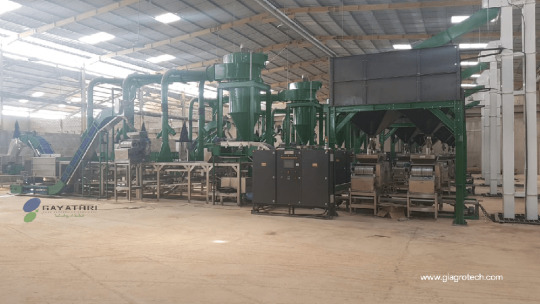
Raw Cashew Shelling Machine, Automatic Cashew Nut Cutting Machines Manufacturers, Kaju Shelling System
GI Agro Tech manufacturing fully automatic cashew shelling machines, manual cashew nuts shell removing machine is used to break cashew and separate shell and kernel. Models are available in horizontal and vertical systems
#rcn shelling system#cashew nut shelling system price#automatic cashew nut shelling machine#cashew nut shelling machine manufacturer#cashew nut cutting system supplier
0 notes
Text
Atrocities US committed against NATIVE AMERICANS
In 2016, the US army corp of engineers approved a Energy Transfer Partners’ proposal to build an oil pipeline near the Standing Rock Indian Reservation, sparking the Dakota Access Pipeline Protests, evoking a brutal response from North Dakota police aided by the National Guard, private security firms, and other law enforcement agencies from surrounding states. The Standing Rock Sioux tribe believes that the pipeline would put the Missouri River, the water source for the reservation, at risk, pointing out two recent spills, a 2010 pipeline spill into the Kalamazoo River in Michigan, which cost over billion to clean up with significant contamination remaining, and a 2015 Bakken crude oil spill into the Yellowstone River in Montana. Police repression has included dogs attacking protesters, spraying water cannons on protesters in sub-freezing temperatures, >700 arrests of Native Americans and ~200 injuries, a highly militarized police force using armored personnel carriers, concussion grenades, mace, Tasers, batons, rubber bullets, and tear gas. In November 2017, the keystone XL pipeline burst, spilling 210,000 gallons of oil in Amherst, South Dakota.
In 1975, FBI agents attacked AIM activists on the Pine Ridge Reservation, in the ‘Pine Ridge Shootout’. Two FBI agents, and an AIM activist were killed. In two separate trials, the U.S. prosecuted participants in the firefight for the deaths of the agents. AIM members Robert Robideau and Dino Butler were acquitted after asserting that they had acted in self–defense. Leonard Peltier was extradited from Canada and tried separately because of the delay. He was convicted on two counts of first–degree murder for the deaths of the FBI agents and sentenced to two consecutive terms of life in prison, after a trial which is still contentious. He remains in prison.
In 1973, 200 Oglala Lakota and AIM activists occupied the town of Wounded Knee, South Dakota, on the Pine Ridge Reservation, called the Wounded knee incident. They were protesting the reservation’s corrupt US-backed tribal chairman, Dick Wilson, who controlled a private militia, called Guardians of the Oglala Nation (GOONs), funded by the government. FBI, US marshals, and other law enforcement cordoned off the area and attacked the activists with armored vehicles, automatic rifles, machine guns, grenade launchers, and gas shells, resulting in two killed and 13 wounded. Ray Robinson, a civil rights activist who joined the protesters, disappeared during the events and is believed to have been murdered. As food supplies became short, three planes dropped 1,200 pounds of food, but as people scrambled to gather it up, a government helicopter appeared overhead and fired down on them while groundfire came from all sides. After the siege ended in a truce, 120 occupiers were arrested. Wilson stayed in office and in 1974 was re-elected amid charges of intimidation, voter fraud, and other abuses. The rate of violence climbed on the reservation as conflict opened between political factions in the following three years; residents accused Wilson’s private militia of much of it.
In Nov. 1969, a group of 89 Native Americans occupied Alcatraz Island for 15 months, to gauge the US’s commitment to the Treaty of Fort Laramie (1868), which stated that all abandoned federal land must be returned to native people. Eventually the government cut off all electrical power and all telephone service to the island. In June, a fire of disputed origin destroyed numerous buildings on the island. Left without power, fresh water, and in the face of diminishing public support and sympathy, the number of occupiers began to dwindle. On June 11, 1971, a large force of government officers removed the remaining 15 people from the island.
From its creation in 1968, The American Indian Movement (AIM) has been a target of repression from law enforcement agencies, and surveillance as one of the FBI’s COINTELPRO targets. This includes the wounded knee incident and the pine ridge shootout.
In 1942 the federal government took privately held Pine Ridge Indian Reservation land owned by tribal members in order to establish the Badlands Bombing Range of 341,725 acres, evicting 125 families. Among the families evicted was that of Pat Cuny, an Oglala Sioux. He fought in World War II in the Battle of the Bulge after surviving torpedoing of his transport in the English Channel. Dewey Beard, a Miniconjou Sioux survivor of the Wounded Knee Massacre, who supported himself by raising horses on his 908-acre allotment received in 1907 was also evicted. The small federal payments were insufficient to enable such persons to buy new properties. In 1955 the 97-year-old Beard testified of earlier mistreatment at Congressional hearings about this project. He said, for “fifty years I have been kicked around. Today there is a hard winter coming. …I might starve to death.”
In 1890, US soldiers killed 150-300 people (including 65 women and 24 children) at Wounded Knee (19-26 people, including two women and eleven children.) on the Lakota Pine Ridge Indian Reservation in the U.S. state of South Dakota. Twenty-five soldiers also died, and 39 were wounded (6 of the wounded later died). At least twenty soldiers were awarded the Medal of Honor. The event was driven by local racism towards the practice of Ghost Dancing, which whites found distasteful, and the Native Americans arming up in response to repeated broken treaties, stolen land, and their bison-herds being hunted to near extinction by the whites.
In 1887, the Dawes Act, and Curtis Act, resulted in the loss of 90 million acres of native-alloted land, and the abolition of many native governments. During the ensuing decades, the Five Civilized Tribes lost 90 million acres of former communal lands, which were sold to non-Natives. In addition, many individuals, unfamiliar with land ownership, became the target of speculators and criminals, were stuck with allotments that were too small for profitable farming, and lost their household lands. Tribe members also suffered from the breakdown of the social structure of the tribes.
Starting in the 1870s, The US army, aided by settlers and private hunters, began a widespread policy of slaughtering bufallo and bison, in order to destroy many tribe’s primary food source, and to starve Native Americans into submission. By 1900, they succeeded; the bufallo population dropped from more than 30 million, to a few hundred. The country’s highest generals, politicians, and presidents including Ulysses S. Grant, saw the destruction of buffalo as solution to the country’s “Indian Problem.” By destroying the food supply of the plains natives, they could more easily move them onto reservations.
Starting in 1830-50, The Trail of Tears was a series of forced removals of Native American nations, including Chickasaw, Choctaw, Creek, Seminole, Cherokee people and the African freedmen and slaves who lived among them, from their ancestral homelands in the Southeastern United States to an area west of the Mississippi River that had been designated as Native Territory. The forced relocations were carried out by various government authorities following the passage of the Indian Removal Act in 1830. “Marshaled by guards, hustled by agents, harried by contractors,they were being herded on the way to an unknown and unwelcome destination like a flock of sick sheep.” They went on ox wagons, on horses, on foot, then to be ferried across the MississippiRiver. The army was supposed to organize their trek, but it turned over its job to private contractors who charged the government as much as possible, gave the Indians as little as possible. The Cherokee removal in 1838 (the last forced removal east of the Mississippi) was brought on by the discovery of gold near Dahlonega, Georgia in 1828, resulting in the Georgia Gold Rush. Approximately 2,000-6,000 of the 16,543 relocated Cherokee perished along the way.
In 1848, the California Genocide is a term used to describe the drastic decrease in Native American population in California. The population decreased from ~300,000 in 1769, to 16,000 in 1900.
The Second Seminole War, also known as the Florida War, was a conflict from 1835 to 1842 in Florida between various groups of Native Americans collectively known as Seminoles and the United States, part of a series of conflicts called the Seminole Wars. The Second Seminole War, often referred to as the Seminole War, is regarded as “the longest and most costly of the Indian conflicts of the United States.” ~3000 seminoles were killed, and 4000 were deported to Indian territory elsewhere.
In 1832, the Black Hawk War, was a brief 1832 conflict between the United States and Native Americans led by Black Hawk, a Sauk leader, in Illinois. The war gave impetus to the US policy of Indian removal, in which Native American tribes were pressured to sell their lands and move west of the Mississippi River and stay there. Over 500 Native Americans were killed in the conflict.
In 1832, the Chickasaw Indians were forced by the US to sell their country in 1832 and move to Indian Territory (Oklahoma) during the era of Indian Removal in the 1830s.
In 1813, the Creek War, was a war between the US, lead by the then notorious indian-hunter Andrew Jackson, and the Creek nation, residing primarily in Alabama. Over 1,500 creeks were killed. The war effectively ended with the Treaty of Fort Jackson, where General Andrew Jackson insisted that the Creek confederacy cede more than 21 million acres of land from southern Georgia and central Alabama. These lands were taken from allied Creek as well as Red Sticks. In 1814, Andrew Jackson became famous for his role in the Battle of Horseshoe Bend, where his side killed more than 800 Creeks. Under Jackson, and the man he chose to succeed him, Martin Van Buren, 70,000 Indians east of the Mississippi were forced westward.
The Red Sticks, a faction of Muscogee Creek people in the American Southeast, led a resistance movement against European-American encroachment and assimilation; tensions culminated in the outbreak of the Creek War in 1813.
From 1785-96, the Northwest Indian War was a war between the US and a confederation of numerous Native American tribes, with support from the British, for control of the Northwest Territory. President George Washington directed the United States Army to enforce U.S. sovereignty over the territory. Over 1,000 Native Americans were killed in the bloody conflict.
In the 1800s, Indian removal was a policy of the United States government whereby Native Americans were forcibly removed from their ancestral homelands in the eastern United States to lands west of the Mississippi River, thereafter known as Indian Territory. That policy has been characterized by some scholars as part of a long-term genocide of Native Americans.
The Texan-Indian Wars were a series of 19th-century conflicts between settlers in Texas and the Southern Plains Indians. Its hard to approximate the number of deaths from the conflicts, but the Indian population in Texas decreased from 20,000 to 8,000 by 1875.
The Indian Wars is a name given to the collection of over 40 conflicts and wars between Native Americans and US settlers. The US census bureau reports that they have cost the lives of about 19,000 white men, women and children, including those killed in individual combats, and the lives of about 30,000 Indians. The actual number of killed and wounded Indians must be very much higher than the number given… Fifty percent additional would be a safe estimate.
From 1500-1900s, European and later US colonists and authorities displaced and committed genocide on the Native American Population. Ward Churchill characterizes the reduction of the North American Indian population from an estimated 12 million in 1500 to barely 237,000 in 1900 as a “vast genocide.. the most sustained on record.
#anti capitalism#socialism#leftism#anarchy#communism#late stage capitalism#classism#economics#inequality#capitalism#current events#us healthcare#us house of representatives#us history#us hegemony#anti imperialism#imperialism#anti capitalist love notes#tweet#anti capitalists be like#anti capatilism#native american#killers of the flower moon
30 notes
·
View notes
Text
26. Tickle in the Throat
Sam wakes to pounding on the hotel room door. It’s the middle of the night and all she wants is to go back to sleep, but she can hear her teammates shouting through the door. She drags her body out of bed, pulling open the door. She is greeted by a number of her teammates rushing into the room.
Alex is in the front, racing over to the other bed in the room. You’re laying there, unable to speak. Your lips are turning blue, your face pale. She pulls you out of your slumped position, lifting you into her arms.
Alex carries you out onto the balcony of the hotel room, the cool air helping your breathing slightly. Tobin follows behind, wrapping a comforter around you. Once you’re fully swaddled and protected from the elements, she sits on the chair next to you.
“I called 911, an ambulance should be here within 5 minutes,” Tobin says quietly to Alex.
Alex just nods, looking down at where you were slumped in her lap. Occasionally, you would let out a barking cough. Mainly, you were struggling to pull in enough oxygen, each inhale accompanied by a tight, whistling sound. She could see the skin by your collarbone retracting in with your breathing, but she quickly tugs the blanket up to cover the bare skin.
The rest of the players who were awake had managed to squeeze onto the balcony, refusing to take their eyes off of you. Sam looks a bit shell shocked, staring at you with disbelief in her wide eyes.
“What’s going on?” she asks, the question directed to anyone.
Alex chimes in, “I think it’s croup. Y/N seems to be ticking all of the boxes, even if she is old to have it.”
Sam nods slightly, “how’d you know?”
“I didn’t, Tobin actually did. She could hear her coughing through the wall and woke me up. By the time we got to your door, she had gone quiet and we panicked.”
“What if you hadn’t heard?” Sam questions quietly, “if nobody heard and I didn’t wake up, what would have happened?”
Nobody responds, not wanting to discuss the topic. They instead look to where you were very much alive in Alex’s arms. Your lips were still blue, but you were managing to cough more. The barking sound was a reassurance to everyone that at least you were moving some air.
Moments later, paramedics enter the room, escorted by the hotel manager. They rush to you, fastening an oxygen mask over your face. They allow Alex to bring you to the stretcher where they start assessing you.
“Croup?” one of the paramedics asks the other.
“She’s not a toddler, otherwise it fits,” she responds to her partner. Looking at the group, she asks “does anyone know if she has any medical history? Asthma, anything like that?”
Tobin nods, “I think she has asthma, the coaches keep an inhaler for her.”
The paramedic nods, “any chance someone knows if she was premature?”
The group looks between each other. Sure, they knew a lot about each other, but they didn’t typically talk about their gestational age at birth.
“Has anyone met her family?” she asks, waiting for the nods, “okay, good. Is she the same size, bigger or smaller than her parents and siblings?”
“Smaller,” came the automatic group response.
The paramedic nods, turning to where her partner was treating you, “PMH of asthma, likely a premature birth. Could be croup, it does love underdeveloped lungs.”
The two continue talking in what sounds like gibberish. As they talk, they work, getting you loaded up and heading out the door. Alex begs to go with them, not caring that she’s dressed in pajamas. They relent, allowing her to ride with you.
As the elevator doors shut, the rest of the team is left standing there. Everyone is in pajamas or some variation of. Hair is sticking up and everyone is barefoot. But they don’t care, and nobody makes a move to go back to their room. They reenter the room where, only minutes ago, you could barely breathe. The room where they had seen you stuck with needles and hooked up to machines.
It was also the room that was lit up by the small nightlight you refused to sleep without. It was the room where your clothes were piled in a heap overflowing your suitcase. It was the room with the bed holding your stuffed animal and blankets that you refused to travel without, no matter how old you got.
They settled around the room, the air quiet and heavy. Everyone is trying to process what has happened. Some had their phones out, frantically searching online for more information. Some had their eyes closed, their body fighting for sleep after all of the excitement. And some just sat there, staring at the place where your blue-tinged body had been slumped. They sat and watched the time pass, completely helpless.
But then a collective buzz was heard around the room, a message from Alex. It was a picture of you in a hospital bed, smiling behind an oxygen mask and giving a thumbs up to the camera. Alex reassured everyone that you would be fine and that you would likely be home before dinner that night. She also instructed everyone to get some more sleep and rest up for your return.
No one made a move to leave the room, a silent agreement already made. Everyone made themself comfortable, laying where they could. Masses of players were formed, bodies intertwined on beds, sofas, and floors. It wasn’t comfortable, but it was comforting, and that what was everyone needed tonight.
#uswnt#uswnt players#uswnt imagines#uswnt woso#woso imagine#uswnt imagine#uswnt x reader#reader insert#woso imagines#woso soccer#womens soccer#woso#uswnt reader#woso x reader
178 notes
·
View notes